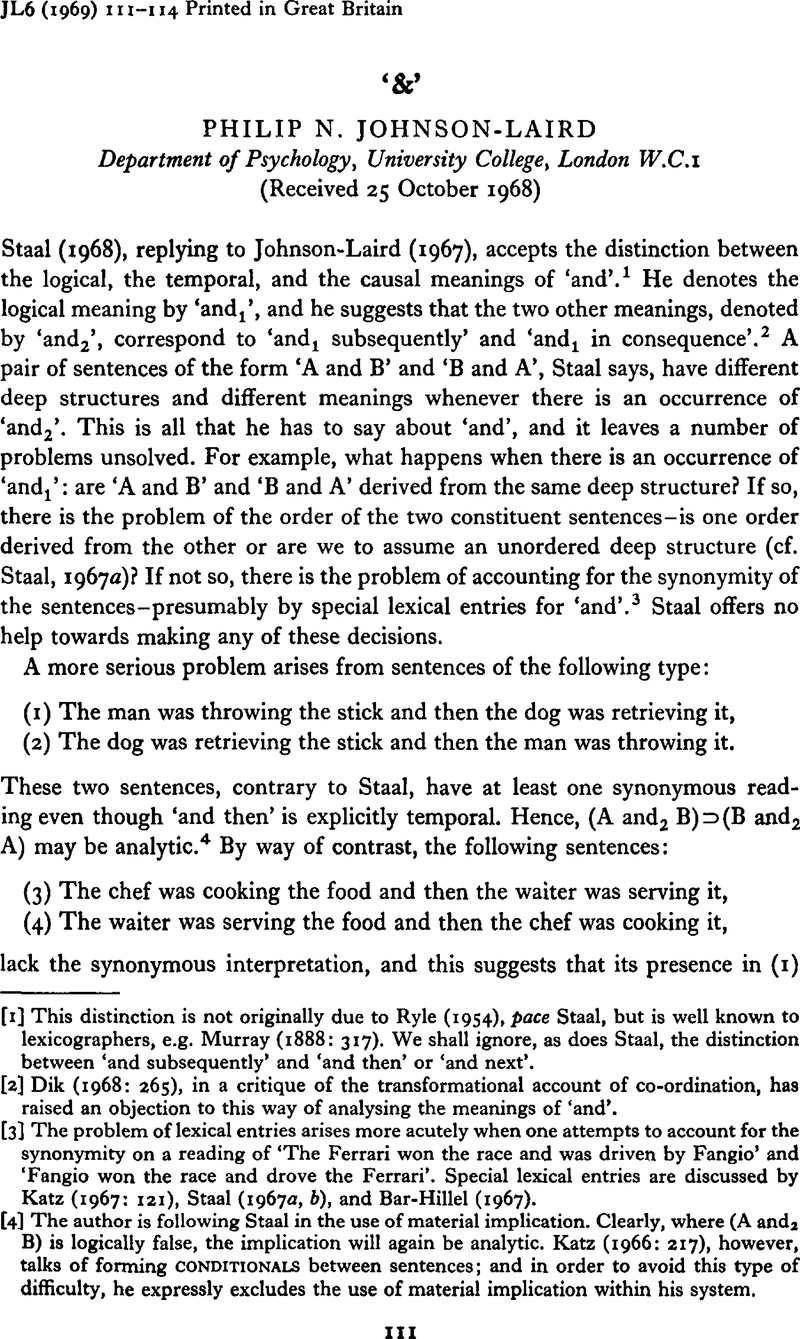Crossref Citations
This article has been cited by the following publications. This list is generated based on data provided by Crossref.
Springston, Frederick J.
and
Clark, Herbert H.
1973.
And and or, or the comprehension of pseudoimperatives.
Journal of Verbal Learning and Verbal Behavior,
Vol. 12,
Issue. 3,
p.
258.
Schiffrin, Deborah
1986.
Functions of and in discourse.
Journal of Pragmatics,
Vol. 10,
Issue. 1,
p.
41.
Schiffrin, Deborah
1987.
Toward an empirical base in pragmatics (Review Article).
Language in Society,
Vol. 16,
Issue. 3,
p.
381.
Dubois, Betty Lou
1989.
Pseudoquotation in current English communication: “Hey, she didn't really say it”.
Language in Society,
Vol. 18,
Issue. 3,
p.
343.



